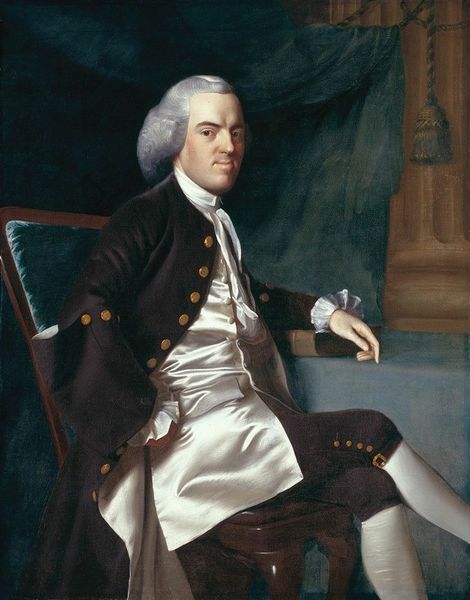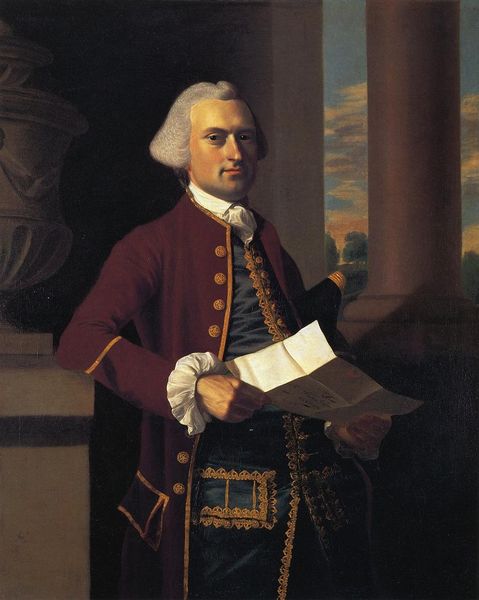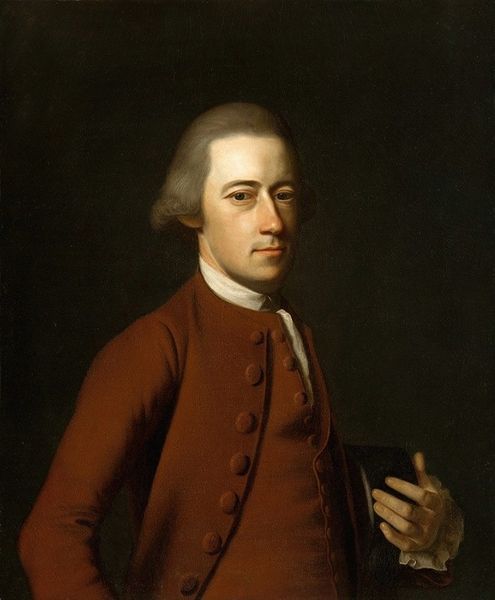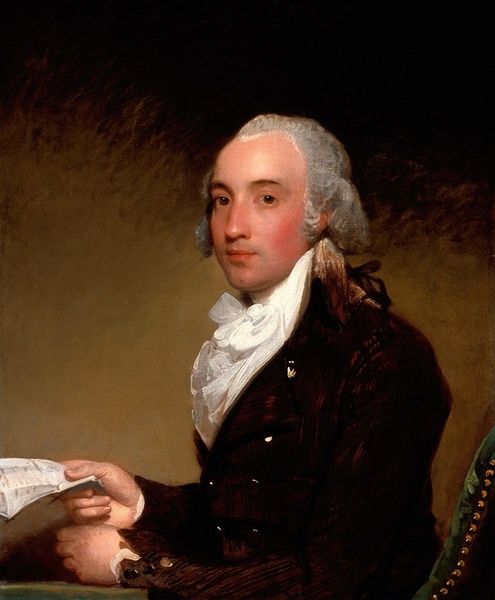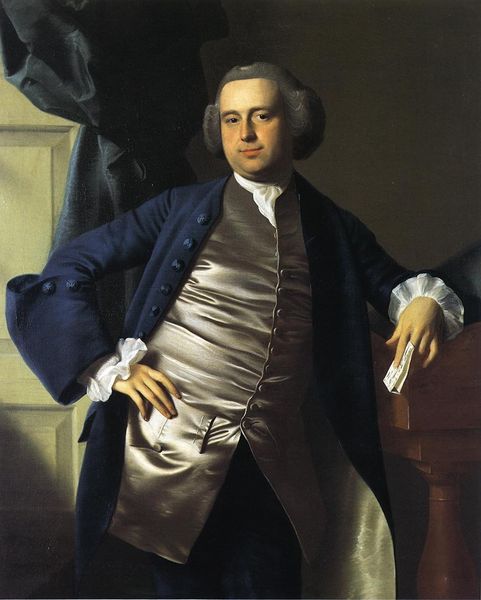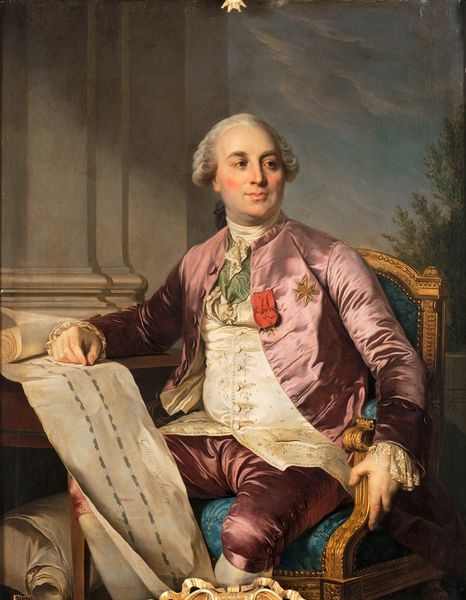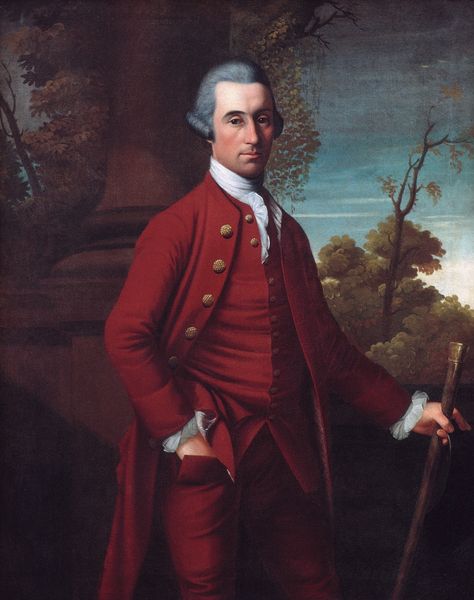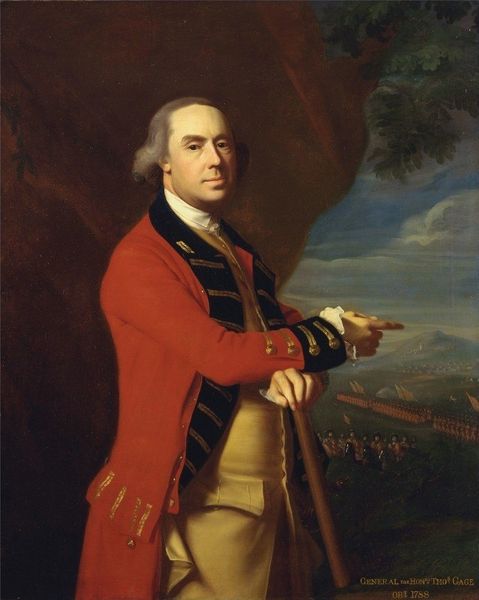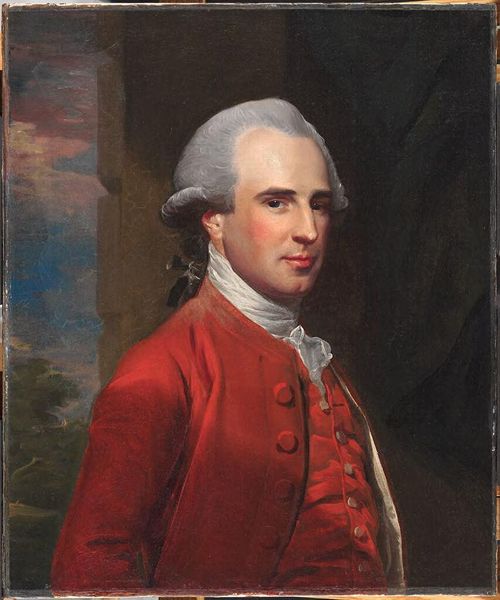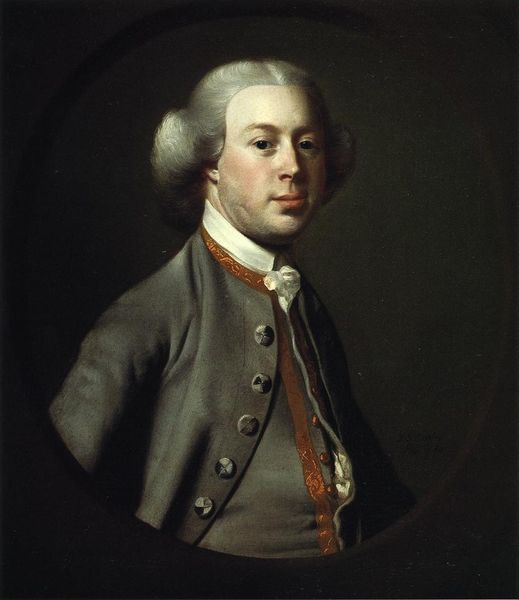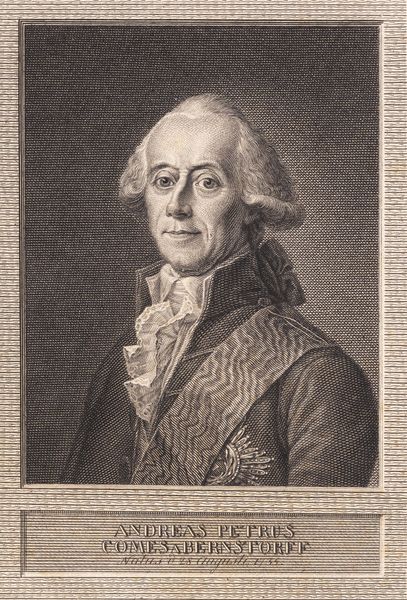
Copyright: Public Domain: Artvee
Editor: So, this is John Singleton Copley's "Portrait of Joseph Scott," painted around 1765, using oil. I am immediately drawn to how assured and in control this man looks; there is something about his expression, it demands respect. What strikes you most about this work? Curator: What I see here are symbols of the enlightenment ideal – reason, order, and self-control rendered through the lens of Colonial ambition. Consider the book he holds. It's a potent symbol of knowledge and literacy. Do you think it's merely an accessory, or does it tell us something about Joseph Scott's identity? Editor: I see it as more than just a prop; it does contribute to that image of intellectual authority, but it might also be hinting at Scott's personal interests. The costume and carefully posed angle contribute to the feeling of cultivated wealth. Curator: Indeed. The color red in paintings like this also resonates with a number of interpretations. Red represents power, status, and even sacrifice, and its impact on the gaze emphasizes the overall emotional quality. Do you perceive anything unusual or intriguing about the setting, or the overall composition? Editor: I think it’s the dark, almost undefined space behind him that seems peculiar. He's positioned in front of what looks like a heavy drape, so the light focuses squarely on him. It creates a very deliberate staging, right? Curator: Precisely. By shrouding the background in darkness, the artist draws our attention to the sitter, who represents more than himself; he symbolizes a new class of Colonial elite carving out a space in the world. This isn’t just a portrait, it is an icon for generations to come. Editor: That gives me a new understanding, as a visual statement and cultural document, to better read symbols from history and social standing.
Comments
No comments
Be the first to comment and join the conversation on the ultimate creative platform.
